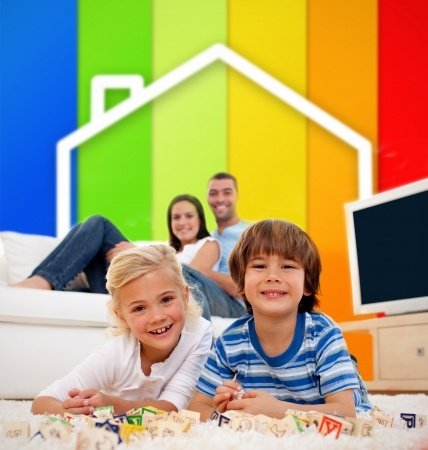An energy-efficient home is a comfortable and more affordable home

Homeowners should consider the importance of using green building practices and having an energy-efficient home. Both are key factors that can not only support the environment but also improve the quality of life for you and your family.
Simply put, an energy-efficient home is a more comfortable home throughout each season of the year. It’s warmer in winter and cooler in the summer. And that makes it less costly for you to maintain. An energy-efficient home will ensure your family is comfortable throughout the year.
How an energy-efficient home makes your life better
One of the principles of green building is energy efficiency through the life-cycle of the home—and that includes all the materials that go into constructing it. Studies show buildings constructed primarily of wood use less energy in the construction phase than buildings made of concrete, brick or steel.
Another principle of energy efficiency in home building is reducing air leakage through the “building envelope”—the walls, doors, window and other barriers between the inside and the outside of the home. Better insulation in walls, ceilings and floors, as well as windows that reduce the transfer of thermal energy, make a huge difference in improving energy efficiency. Sealing cracks or narrow openings around doors and windows also aids in constructing an energy-efficient home.
The design of a home can also affect its energy consumption. “Daylighting” refers to the practice of positioning windows to allow more natural light inside, reducing the need for electric lights during the day. Making better use of sunlight during the winter months can also reduce the need for heating.
For the people who live in these houses, an energy-efficient home means a more comfortable indoor environment with fewer drafts. It also means that you, the homeowner, spend less money on heating and air-conditioning, leaving you more money to spend on activities such as winter sports.
National advantages of an energy-efficient home
Energy efficiency in your home also means a healthier living environment for you and your family. Less leakage of hot or cold air through windows and around doors means less water condensation.
According to some studies, 10 to 15 quarts of water vapor is released inside the average American house every day. Once the humidity level rises over 40 percent, air-quality problems can follow.
The most obvious problem is condensation. Water that condenses inside windows can puddle on sills and floors, leading to water damage to your walls and floors. Meanwhile, mold and mildews can lead to allergies and other illnesses, which can cause family members to miss time at school or work. Studies show that humid homes encourage the growth of some airborne diseases.
Water damage can also accumulate over time, leaving the homeowner with hefty repairs and maintenance bills. Few things are more frustrating or time-consuming than putting a home back together that has been subjected to years of routine water exposure.
According to studies, energy-efficient buildings last longer and cost less to maintain. These factors, plus the greater comfort of living in a green house, lead to higher resale values.
Energy efficiency doesn’t apply just to your home, either. Consider all the houses in any given neighborhood. By reducing the energy needs of an entire community, developers can have a dramatic impact on the overall energy consumed across the country. This has further benefits for the natural environment by reducing greenhouse gas emissions and more.
Energy efficiency and your home
You owe yourself energy efficiency. A healthier home environment for you and your family produces lower costs for heating, air-conditioning and maintenance, results in a longer life for the building and reduces your impact on the environment. At Rainey Homes, we look forward to helping you achieve those objectives.


